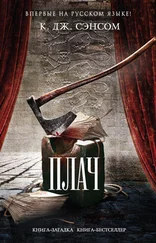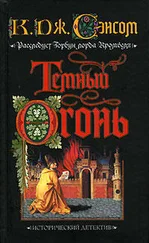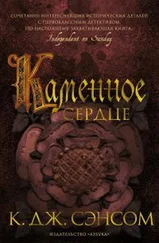There has been discussion in recent years over where the battle site might be, focused on the discovery by the archaeologist Anne Carter of a site named ‘Dussing’s Deale’, three miles east of Norwich, in eighteenth-century records, which she argued presented suitable terrain. 4Previously most writers followed Sotherton, who states that the site of the battle was at ‘Dussens Dale’ which was ‘not past a myle of[f]’. 5Since Warwick left from Coslany Gate in the north of the city, however, the destination was surely likely to be to the north – if he had intended to follow a rebel march to the east he would have left from one of the southern gates. Such a long march would have been hard for him, but equally so for the rebels. I think Leo Jary’s argument that the battle site was directly north of Norwich, and a mile from Kett’s headquarters at St Michael’s Chapel, is correct. It accords with the sources and makes military sense. He also points out that the name Dussin is not uncommon in Norfolk. 6Meanwhile the idea, originating with Sotherton, that the rebels were influenced in their choice of battle site by a prophecy can be dismissed: everything we know about the rebels in battle indicates their decisions were based on careful planning.
The country gnoffes, Hobb, Dick, and Hick,
with clubs and clouted shoon,
Shall fill up Dussyn dale
with slaughtered bodies soone. 7
THE FINAL BATTLES : 24–27 AUGUST
On 24 August Warwick, camped three miles from Norwich where he was awaiting the arrival of the mercenaries, once more sent a Herald to Norwich. Augustine Steward suggested that another offer of pardon be made to the rebels. Warwick agreed to this, and sent the Herald back to try and negotiate it. 1Steward must surely have acted on Kett’s instructions. Kett sent some forty horsed rebels, who returned to the camp with the Herald, a trumpeter and two aldermen (and, from what transpired, clearly some soldiers as well). When the Herald arrived outside Bishopsgate Bridge the sound of the trumpet fetched a large number of rebels. Kett himself was not present at first.
The Herald addressed the group. Many removed their caps and cried ‘God save King Edward’ (the camp’s loyalty to Edward had never been in question). He was then joined by Kett with a further body of men. The Herald announced that the King had sent down the Earl of Warwick with power to suppress the rebels, but ‘if they would ... humbly submit themselves to ye Kings mercy hee woulde graunt to them his Highness pardon for life and goods Kett only excepted’. If they refused, Warwick would not depart until he had ‘vanquishd them with the sword’.
Sotherton records that although many trembled, others said that they might seem fair words but that afterwards they would be hanged, others again that the Herald was not sent by the King at all but was an agent of the gentleman ‘putting on him a piece of an old cope for his cote armour’. Clearly, the camp was in no mood to surrender. However, Kett was allowed to lead the Herald to another part of the camp to repeat his message.
Then a tragedy occurred. A boy in the crowd bared his backside at the Herald; as shown in Tombland , this was a standard Tudor insult, but one of the men with the Herald immediately shot the boy dead with a currier (a small arquebus). He must have been a soldier, with a fire already lit. I have made Simon Scambler the victim of this real event in Tombland . We have no idea who the boy actually was.
This was the end of any slim prospect of negotiation. Rebels rode through the wood calling out ‘our men are kylled by the water syde’. The Herald rode back towards Norwich. Kett accompanied him, apparently intending to return with him to Warwick, but he was followed and surrounded by a rebel company saying ‘whither away, whither away, Master Kett; if you goe, we will goe with you, and with you will live and dye’. This sounds like suspicion on the part of the camp-men that Kett had decided to try and carry negotiation further despite the will of the camp. The Herald told him to stay with his men, and rode away.
Warwick now brought his army up to the gates and, having been apprised by Augustine Steward that entry could easily be gained through one gate, the ‘Brazen Gate’, quickly broke through, while Steward ordered the neighbouring Westwick Gate to be opened.
This (hardly unexpected) about-face by Steward allowed Warwick to make a surprise entry into the city. He and his troops reached the market square where some fifty rebels were captured and later hanged. At about three in the afternoon of this eventful day, the baggage carts and artillery entered the city.
The rebels gathered in Tombland and divided into companies to begin street fighting. The government forces’ lack of knowledge of the streets had already caused their artillery train to lose its way, and in Tombland it was subject to a rebel assault. Most of the artillery was captured and taken to Mousehold, and later used by the rebels. By now there was fierce fighting in the streets; in one encounter near St Andrew’s Hall rebel bowmen gave a good account of themselves, but were surprised by Captain Drury with a band of handgunners and set to flight. Elsewhere, the rebels shot down the tower off Bishopsgate Bridge, but after a further skirmish Captain Drury won back the position. At the end of the afternoon they had been driven from the city, retreating to Mousehold. To the south of the city large areas were set on fire.
Next day, the 25th, Kett’s forces attacked again and at one point gained control of both the north and south of the city, although fierce fighting forced them again to withdraw. At this point Warwick planned to blow up the bridges connecting the north to the rest of the city, and the city authorities, seeing no end to the destruction, begged him to leave. If he had, this would probably have given victory to the rebels, certainly bringing Norwich back under their control. However, he refused, demanded the authorities’ loyalty, and compromised by blowing up only one bridge. He also set up a system of billeting troops on householders.
On the 26th the landsknechts arrived. There was no fighting that day; the rebels realized that having lost Norwich and, critically, access to supplies at the market, they would soon run out of necessities. Somerset confirms this was his strategy in a letter to Philip Hoby, ambassador to the Holy Roman Emperor. 2
On Mousehold Heath, therefore, the rebels decided to give battle at their chosen site of Magdalen Hill, on the lower slopes of the heath, not far from the city’s northern walls – marching over mainly even ground to a spur of the heath that gave them the advantage of high ground, with the sun behind them and in the eyes of Dudley’s forces. 3Probably as a symbol to friend and foe that there was no turning back, on the night of the 26–27 August they burned the camp. They had erected a defensive line of stakes facing the direction government forces would take, built protective earthworks to prevent a flanking movement from the west, and had erected a gun-flat for their twenty cannon, 4which now outnumbered Warwick’s. Behind the stakes, facing the front rank of the army, the gentleman prisoners were chained together as a human shield. 5Early in the morning of 27 August, the landsknechts having arrived, Warwick’s army marched out of Coslany Gate and turned right to face the rebels.
There is dispute about the numbers involved in the battle; certainly Warwick kept his English footmen in Norwich, going into battle with the horsed English forces and landsknechts. 6I therefore suggest a figure of some 5,000 men, mostly professional soldiers, well horsed, armed and armoured, some with handguns, facing perhaps 6,000 rebels, less well armed, less well armoured and with fewer of the vital junior officers, but with a crucial advantage in artillery, and on the high ground.
Читать дальше






![К Сэнсом - Стенание [другой перевод]](/books/432043/k-sensom-stenanie-drugoj-perevod-thumb.webp)



